General Information
The flow-captor and vent-captor are compact, self-contained flow sensors that work according to a calorimetric principle. The principle allows for the creation of compact, reliable flow sensors with a price/performance ratio not possible with other flow-sensing principles. Especially at low flow rates, no other sensing principle can achieve the high accuracy as the flow-captor.
First engineered by weber Sensors more than 30 years ago, weber continues to pioneer sensors based on this principle.
flow-captors and vent-captors are available as insertion and in-line types.
Both are also available with a binary output as switches and adjustable set-point and with an analog output as meters with an adjustable measuring range.
Calorimetric Principle
The calorimetric principle is sometimes called the heat dissipation or simple thermal principle.
Basically, a small probe that is exposed to the medium to be sensed is electrically heated above the medium temperature. The flow of the medium creates a cooling effect that cools the probe relative to the velocity. The temperature change is measured and converted into the desired electrical output signal.
Please e-mail us for detailed information about the calorimetric principle
The 1/7th Rule
Laminar flow is the ideal flow condition with no obstruction or bends.Under this condition the flow rate at an insertion depth of 1/7th of the pipe diameter represents the average flow speed across the pipe diameter.
Turbulent flow is a very common flow condition characterized by a flat flow profile across the pipe diameter starting almost immediately after the pipe wall.
Applying the 1/7th rule creates the same accurate metering as under laminar flow conditions.
The adjustable 1/7th diameter insertion depth, obtainable with the flow-captor smart meter, ensures high measurement accuracy under almost all conditions across a wide range of pipe diameters.
Monitors and Meters
flow-captor and vent-captor are available as monitors and meters. Because of the principle of calorimetrics, the flow-captor and vent-captor are the most reliable and dependable flow monitors on the market. flow-captors and vent-captors as meters, break the barrier of the accuracy-trumpet and are unparalleled when it comes to the measurement of low flow.
Calorimetric flow sensors are characteristically very sensitive at a very low flow rate but much less sensitive to higher flow rates. Normally at a flow rate of approximately 50 cm/s (water) and 10 m/s (air). flow-captors and vent-captors use advanced calorimetric principles that enable them to extend the almost linear flow rate up to 4 m/s (flow-captor) and up to 50 m/s (vent-captor).
Because of this unique feature, flow-captors and vent-captors are available as accurate flow meters with wide measuring ranges as well as flow switches with wide linear set-point ranges.
For the same reason, flow-captors and vent-captors can be calibrated for a variety of medias. Our standard products are calibrated for water, oil or air because these media are used in most applications.
If an accurate set-point is required with other media, the flow-captor and vent-captor can be calibrated to meet your specifications.
Insertion type captors
The Insertion type flow-captors are applicable beginning with 1/2" pipe up to the maximum pipe diameter available, the vent-captors are for pipes 1" and larger.The insertion depth is 1/7" of the pipe diameter or 1 1/2" maximum in most cases, based on requirements.
Because of this, the flow-captor and vent-captor don't obstruct the flow or cause pressure to drop.
Inline captors
The sensor elements of the inline flow-captor are integrated with the outside of the pipe. They are non-intrusive; the pipe inside the sensor is smooth.
Inline-captors are designed especially for monitoring/metering of small flow volumes/speeds in small pipes.
Remote Systems
Most flow-captors and vent-captors are available as compact units or as remote sensors with separate electronic units.
The remote systems are useful for applications where mechanical space limits access or the medium temperature conditions are extreme, requiring physical protection.
Flow Monitor, Binary Output
A very important application for flow sensors is the monitoring of critical flow, such as cooling water in a nuclear power plant, welding robots, etc. It is especially useful in applications where the flow sensor acts as a kind of security device, giving an alarm when something goes wrong.
These sensors are needed because there is always a risk something will go wrong. You don't want to wait until something fails to say, "I wish I had one."
For many applications, flow monitors are required by law or specific regulations. To meet the requirements, many OEMs install less expensive devices. It may work fine, until -- usually after the warranty period is over -- something fails.
Preferred devices in this application are what's often called "paddle switches." A paddle switch is a type of paddle attached to an axle and connected to a micro switch. The flow moves up the paddle resulting in an "on" signal and is supposed to move back down when the flow stops.
Problems are caused by sediments in the medium or by corrosion -- causing the axle to stick and fail to turn. If the flow stops, it fails to give the warning signal. The failure is only noted during the now "emergency" situation, when it's too late.
flow-captors and vent-captors have no moving parts and are not affected by wear and tear. flow-captors and vent-captors are the most reliable flow monitors available and offer the best protection for all equipment where flow monitoring of any media is crucial.
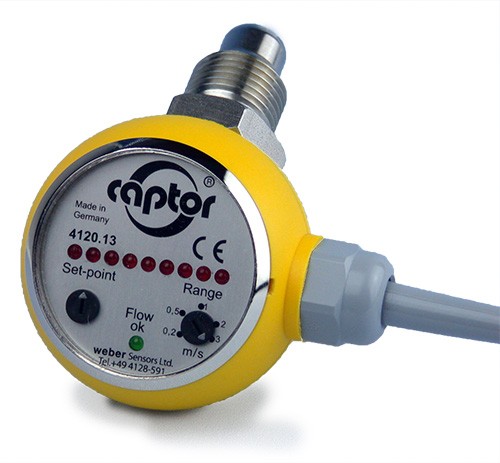 High-precise, compact and robust flow sensor for monitoring or measuring liquid media (switch or meter).
High-precise, compact and robust flow sensor for monitoring or measuring liquid media (switch or meter). 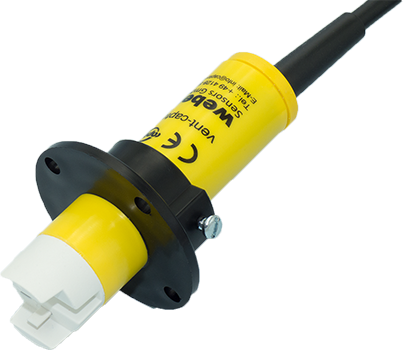 Compact, electronic sensor for monitoring or measuring air and other gaseous media (switch or meter).
Compact, electronic sensor for monitoring or measuring air and other gaseous media (switch or meter). 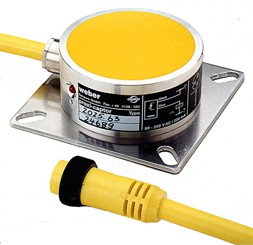 Inductive proximity switches and meters for detection in the steel industry. For switching distances up to 250 mm.
Inductive proximity switches and meters for detection in the steel industry. For switching distances up to 250 mm.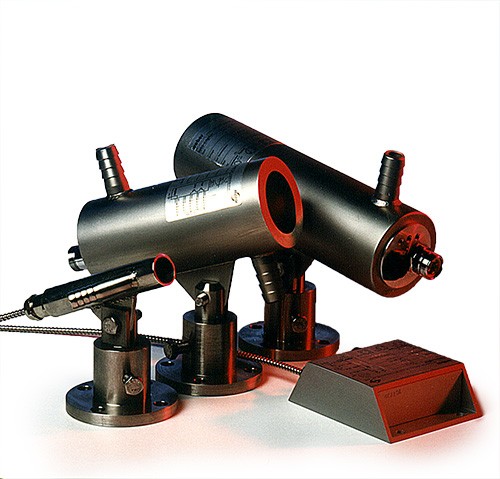 Hot metal detector (HMD) which operates properly and reliable even under rough working conditions. For applications in steel mills.
Hot metal detector (HMD) which operates properly and reliable even under rough working conditions. For applications in steel mills. 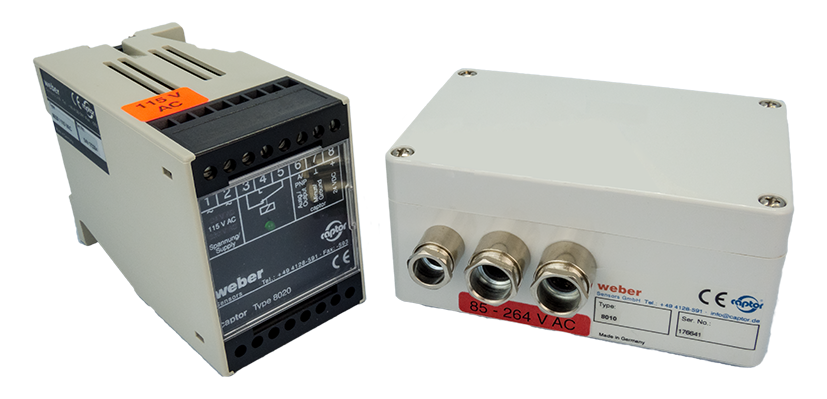 Power supply units for use with flow and vent captor products requiring 24 VDC supply
Power supply units for use with flow and vent captor products requiring 24 VDC supply